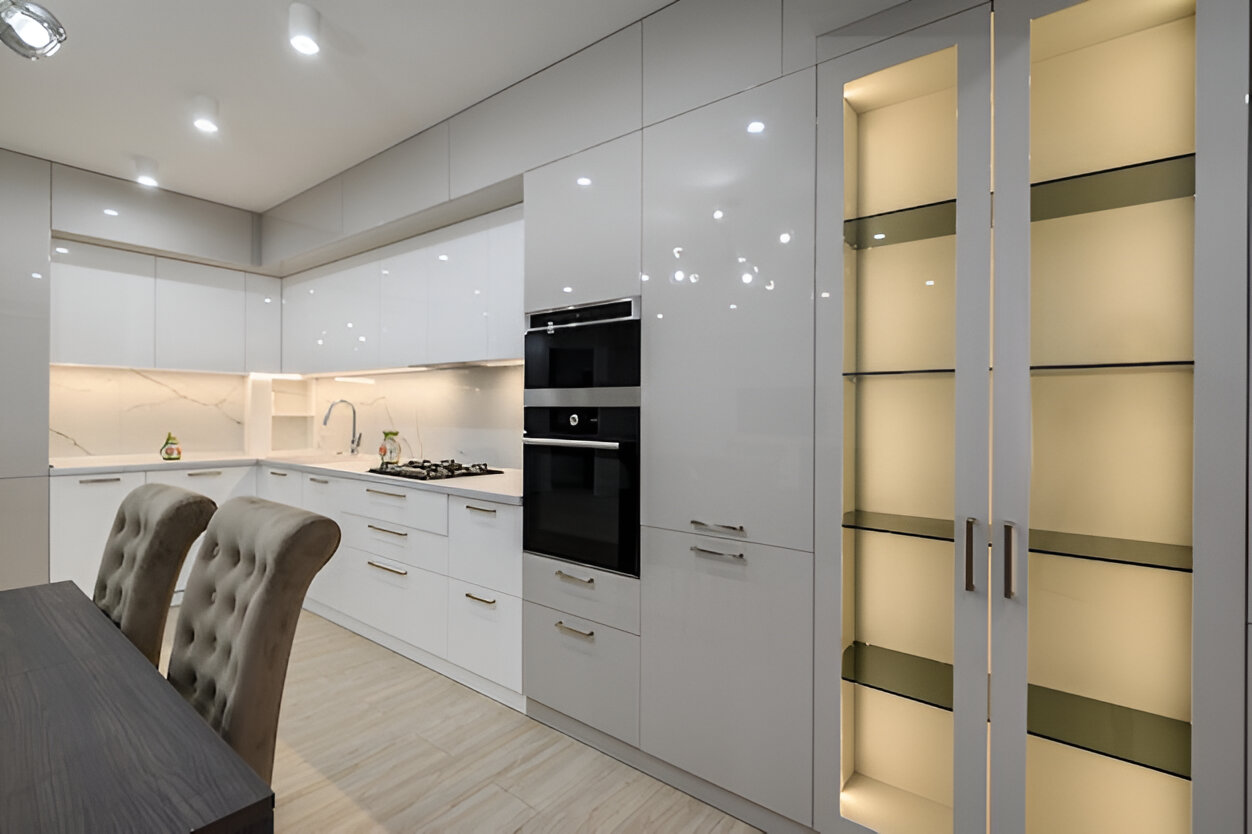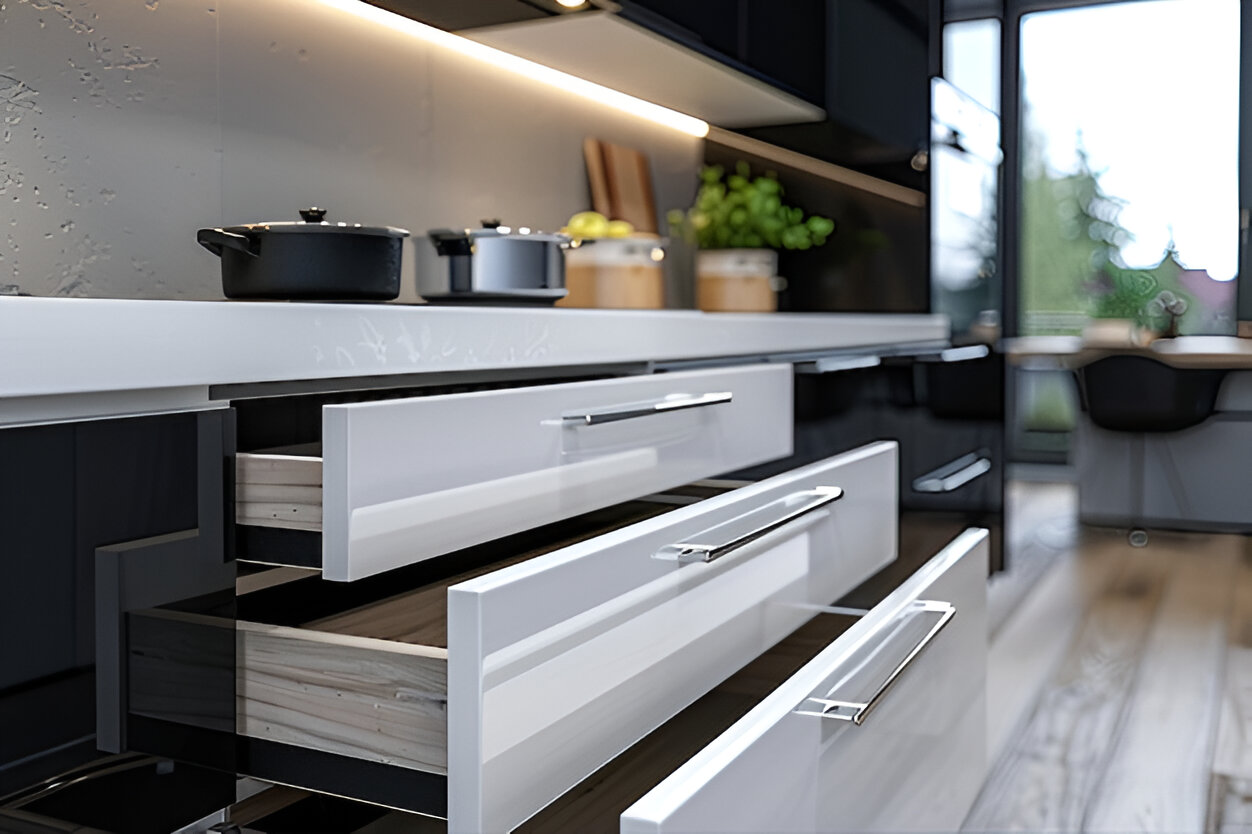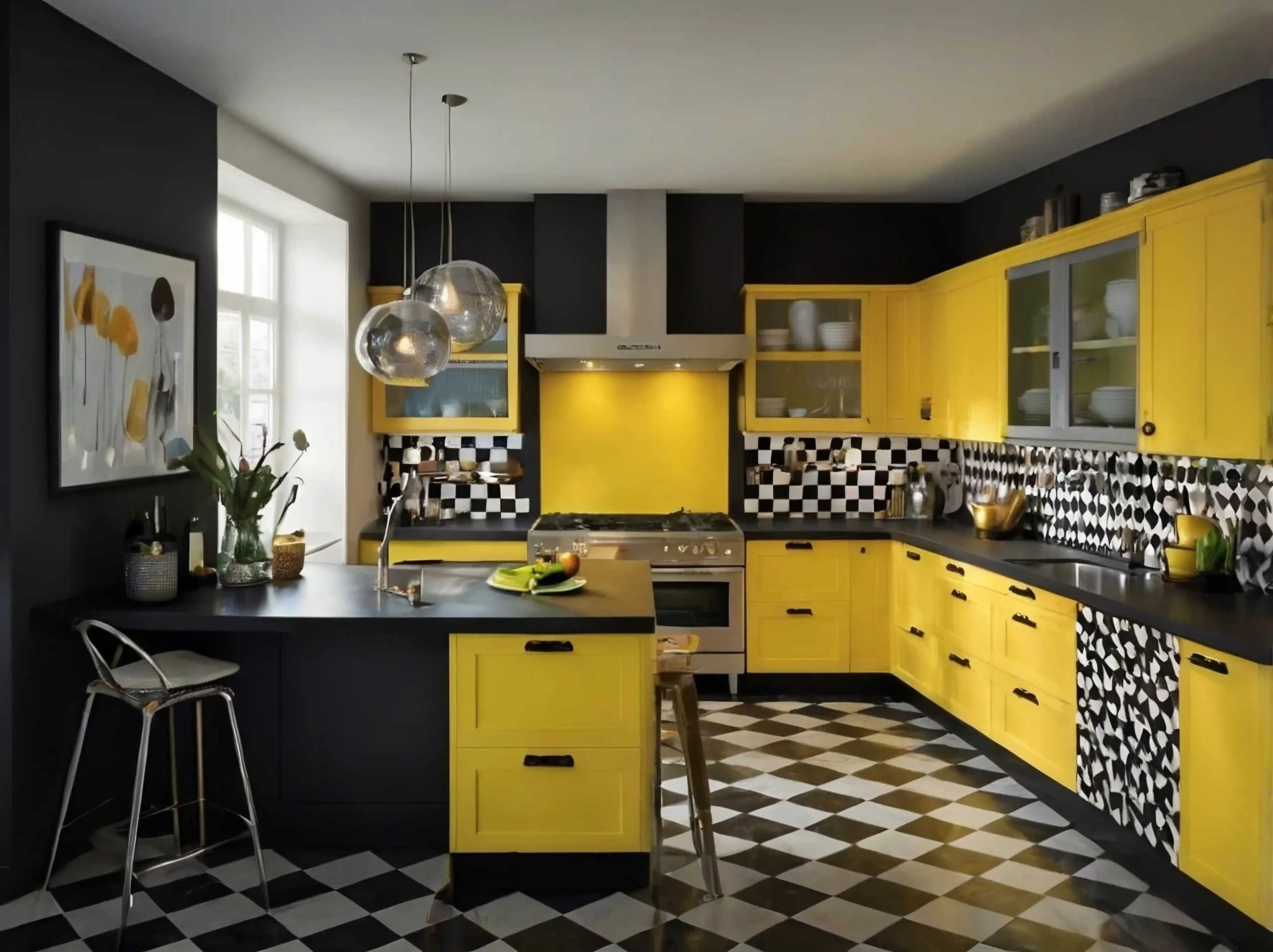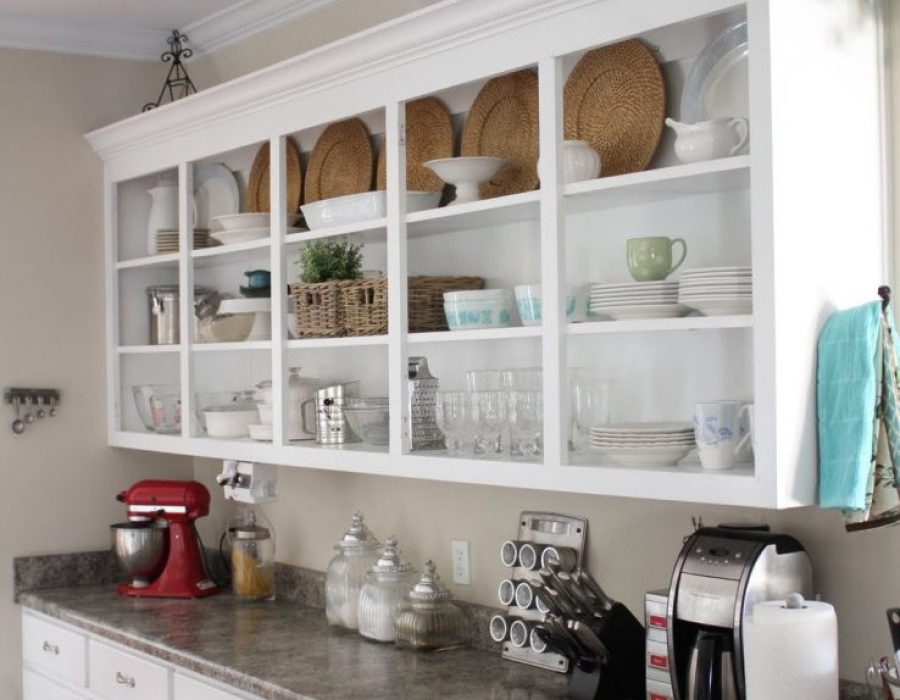Do you want to know what are kitchen wall cabinets? When designing a functional and aesthetically pleasing kitchen, one cannot overlook the importance of these cabinets. These cabinets are essential storage solutions, allowing you to keep your cookware, utensils, and other kitchen essentials organized and within easy reach. This article will explore these cabinets’ benefits, design considerations, and tips for maximizing their functionality.
Why Kitchen Wall Cabinets Matter
Kitchen wall cabinets are vital in creating an efficient and organized kitchen space. They offer convenient storage, keeping your cooking essentials within arm’s reach. With proper planning and design, these cabinets can help maximize your kitchen’s functionality while adding style and visual appeal.
The height and depth of your Hanging kitchen cabinets are crucial. Standard wall cabinets are typically 12 to 18 inches deep, allowing for sufficient storage space without encroaching on the workspace. The height should be determined by factors such as your ceiling height, the size of your appliances, and your height for ease of access.
Types of Kitchen Wall Cabinets
There are several types of Wall-mounted kitchen cupboards commonly used in kitchens. Here are some examples:
- Standard Wall Cabinets: These are the most common these cabinets. They typically measure 12 to 18 inches in depth and 12 to 42 inches in height. They are installed above the countertops and provide storage space for dishes, glasses, and other kitchen items.
- Glass Front Wall Cabinets: Glass front cabinets feature a glass panel on the front of the door, allowing you to showcase your dishware or decorative items. These cabinets can have a traditional or modern design and are often used to create an open and airy feel in the kitchen.
- Open Shelving: Open shelving is a trendy option for these cabinets. Instead of doors, these cabinets have open shelves to display your kitchenware and decorative items. Open shelving provides easy access to items and can add a sense of openness to the kitchen.
- Plate Rack Cabinets: Plate rack cabinets have built-in slots or grooves to hold plates vertically. They are a convenient option for storing and displaying your dishes, making them easily accessible while adding a decorative touch to your kitchen.
- Wine Rack Cabinets: If you’re a wine enthusiast, wine rack cabinets can be a great addition to your kitchen. These cabinets feature specialized racks or holders designed to store wine bottles securely. They can be integrated into standard wall cabinets or designed as standalone units.
These are just a few examples of the types of Upper cabinets for the kitchen available. The choice of cabinet type depends on your storage needs, kitchen layout, and personal preferences.
Materials and Finishes for Kitchen Wall Cabinets
You can’t know what are kitchen wall cabinets without knowing their materials and finishes. Various materials and finishes are available, allowing you to choose options that suit your style and preferences. Here are some common materials and finishes used for these cabinets:
- Wood: Solid wood kitchen cabinets are popular due to their durability and timeless appeal. Common types of wood used for cabinets include oak, maple, cherry, and birch. Wood cabinets can be stained or painted in various colors to match your kitchen decor.
- Laminate: Laminate wall cabinets are made from layers of paper or plastic bonded with resin. They are known for their affordability, easy maintenance, and wide range of colors and patterns. Laminate cabinets can mimic the look of wood or other materials.
- High Gloss: High gloss finishes are becoming increasingly popular for kitchen cabinets. This finish creates a shiny and reflective surface, adding a modern and luxurious touch to the kitchen. High gloss cabinets are available in various colors and are typically made from materials like laminate or acrylic.
- Painted: Painted kitchen cabinets offer endless possibilities for color choices to match your kitchen decor. They can be made from wood or other materials and are finished with paint. Depending on the desired look, paint cabinets can be matte, satin, or glossy.
- Natural Finish: Some kitchen cabinets are left with a natural finish that showcases the beauty of the wood grain. These cabinets are constructed with premium wood like walnut or oak and have a clear sealant or varnish layer to protect them.
- Natural Finish: Some kitchen cabinets are left with a natural finish that showcases the beauty of the wood grain. These cabinets are constructed with premium wood like walnut or oak and have a clear sealant or varnish layer to protect them.
Selecting the Right Hardware
Knowing what are kitchen wall cabinets is important in selecting the right hardware, as it is an important aspect of cabinet design. The hardware you choose can enhance the overall appearance of the cabinets and contribute to their functionality. Here are some factors to consider when selecting hardware for these cabinets:
- Style: Consider the style of your kitchen and cabinets. The hardware should complement the overall design aesthetic. For example, if you have a modern kitchen, sleek and minimalist hardware with clean lines would be a suitable choice. A traditional kitchen may prefer hardware with more decorative elements and intricate designs.
- Finish: Coordinate the hardware finish with the kitchen’s cabinet material and other fixtures. Common hardware finishes include brushed nickel, chrome, brass, oil-rubbed bronze, and matte black. Choose a finish that complements the color and style of the cabinets and the overall kitchen decor.
- Functionality: Consider how you will use the cabinets and the hardware’s functionality. For example, if you have heavy, large doors, choose sturdy and reliable hardware that can handle the weight. If you have soft-closing hinges, ensure the hardware is compatible with this feature.
- Size and Scale: Choose hardware that is proportionate to the size of the cabinets. Larger cabinets may require larger hardware to maintain balance and visual appeal, while smaller cabinets may look better with more delicate or petite hardware. Consider the overall scale of the kitchen and the cabinets when selecting hardware.
- Comfort and Ergonomics: Consider the comfort and ease of use when selecting hardware, especially for cabinet pulls and knobs. Test the hardware to ensure it feels comfortable and is easy to grip and operate. Consider hardware with rounded edges or ergonomic designs for added comfort.
Optimizing Storage Space
Efficient, innovative Storage Solutions in your kitchen wall cabinets is essential. Incorporate features like adjustable shelves, dividers, pull-out racks, and built-in organizers to maximize storage capacity. Use vertical space by installing hooks or rails inside cabinet doors for hanging utensils or towels.
Placement and Installation Tips
Installation and Placement are crucial for achieving a functional and visually appealing kitchen. Here are some tips to consider when placing and installing these cabinets:
- Height and Clearance: The standard height for wall cabinets is typically 18 inches above the countertop. However, this can be adjusted based on your personal preference and the height of the individuals using the kitchen. Ensure enough clearance between the countertop and the bottom of the wall cabinets to work and use small appliances comfortably.
- Studs and Anchoring: When Installing kitchen wall cabinets, securing them to wall studs is essential for stability and strength. Locate the studs behind the wall using a stud finder and mark their positions. Install the cabinets by screwing them directly into the studs. Use appropriate wall anchors to ensure a secure installation if a stud is unavailable in the desired location.
- Leveling: Use a level during installation to ensure the cabinets are level and plumb. Uneven cabinets can affect the overall appearance and functionality of your kitchen. Adjust the cabinet legs or use shims to achieve a level installation.
- Fastening Cabinets Together: If you have multiple Corner kitchen cabinets next to each other, securing them together is important for stability. Use screws and brackets to fasten the adjacent cabinets at the sides and ensure a seamless and secure installation.
- Proper Clearance and Alignment: Ensure sufficient clearance between adjacent cabinets and kitchen features like appliances, windows, and doors. The cabinet doors and drawers should be able to open and close without obstruction. Additionally, align the cabinets properly to maintain a consistent and symmetrical look in your kitchen.
Maintenance and Cleaning
Proper maintenance and regular cleaning of kitchen wall cabinets are essential to keep them looking their best and prolong their lifespan. Here are some maintenance and cleaning tips for these cabinets:
- Regular Dusting: Dust the surface of the cabinets regularly with a soft cloth or a microfiber duster. This helps prevent the buildup of dust and dirt, which can dull the cabinet’s finish over time.
- Wipe Spills Immediately: Accidental spills should be wiped off the cabinets promptly to prevent stains or damage. Use a clean, damp cloth to wipe away any spills or splatters gently.
- Gentle Cleaning Solutions: Mix mild dish soap with warm water for routine cleaning to create a gentle cleaning solution. Dampen a soft cloth or sponge with the solution and wipe down the cabinet surfaces, focusing on areas that may accumulate grease or grime.
- Avoid Harsh Cleaners: Avoid using harsh or abrasive cleaners, which can damage the cabinet’s finish. This includes cleaners containing bleach, ammonia, or strong solvents. Stick to mild cleaning solutions or consult the cabinet manufacturer’s recommendations for suitable cleaning products.
- Test in an Inconspicuous Area: Before using any new cleaning product or method on your cabinets, it’s always a good idea to test it in a small, inconspicuous area first to ensure it does not cause any adverse effects or discoloration.
- Avoid Excessive Moisture: Excess moisture can damage the wood or other materials of the cabinets. When cleaning, wring out the cleaning cloth or sponge well to avoid dripping excess water onto the cabinets.
Pros and Cons of Kitchen Wall Cabinets
Pros of Kitchen Wall Cabinets:
- Increased Storage Space: Wall cabinets provide valuable storage space in the kitchen, allowing you to keep dishes, cookware, and other kitchen essentials organized and easily accessible. They make use of vertical space and maximize storage capacity.
- Utilization of Wall Space: Wall cabinets help efficiently use the available wall space in the kitchen. They free up countertop space and keep the kitchen area clutter-free.
- Eye-Level Access: Wall cabinets at eye level provide convenient access to frequently used items. This eliminates the need to bend or stoop down, making it easier to retrieve items while cooking or preparing meals.
- Design and Aesthetics: these cabinets contribute to the overall design and aesthetics of the kitchen. They come in various styles, finishes, and materials, allowing you to enhance the visual appeal of your kitchen and create a cohesive look.
- Concealment of Clutter: Wall cabinets help hide and conceal kitchen items and supplies you may not want on display, creating a neater and more organized appearance in the kitchen.
Cons Of Kitchen Wall Cabinets
- Limited Visibility: Wall cabinets can limit visibility and make it harder to find and access items stored at the back of the shelves. It can be challenging to see and reach items in deep or high cabinets, leading to potential disorganization or unused space.
- Reduced Openness: Wall cabinets can make the kitchen feel smaller and more closed off, especially if you have a smaller kitchen space. They can obstruct the view and natural light, making the kitchen feel less open and spacious.
- Design Constraints: The installation of wall cabinets can restrict the placement of other kitchen elements, such as windows, backsplashes, or decorative features. This can limit the flexibility of the kitchen design.
- Cost and Installation: Wall cabinets can be expensive, especially if you opt for high-quality materials and custom designs. The installation process may also require professional assistance, adding to the overall cost.
- Cleaning and Maintenance: Cleaning and maintaining wall cabinets can be more challenging than opening shelves or base cabinets. Dust and grease can accumulate on the upper surfaces, requiring regular cleaning and reaching high areas.
Consider these pros and cons of your kitchen layout, storage needs, and personal preferences when deciding whether or not to install wall cabinets. Consider a combination of wall cabinets and other storage options to optimize functionality and design in your kitchen.
Choosing the Perfect Kitchen Wall Cabinet
Choosing the Right Kitchen Wall Cabinets involves considering your requirements, budget, and design preferences. Measure your available space accurately and consult with professionals if needed. When deciding, consider factors like storage needs, functionality, aesthetics, and durability.
Styling and Decorating the Kitchen Wall Cabinets
Modern kitchen wall cabinets can also be visual elements in your kitchen’s design. Consider styling them with decorative items such as plants, artwork, or colorful dishware. Additionally, you can install under-cabinet lighting to create a warm and inviting ambiance and provide task lighting for your countertop workspace.
Budget-Friendly Options
If you’re working within a tight budget, there are cost-effective options for traditional cupboard designs. Consider ready-to-assemble (RTA) cabinets or semi-custom cabinets that offer affordability without compromising quality. You can also explore our discount cabinets.
Customization and Personalization
Customizing kitchen wall cabinets are an excellent choice for those seeking a unique and tailored kitchen design. Custom cabinets allow you to specify the exact dimensions, materials, finishes, and hardware per your preferences. This level of customization ensures that your cabinets fit seamlessly into your kitchen’s design while meeting your specific storage needs.
Alternative Uses for Kitchen Wall Cabinets
Affordable kitchen cupboards can be versatile storage solutions beyond the kitchen. You can use them in areas like the laundry room, garage, or home office. You can transform these cabinets into functional and stylish storage in various parts of your house with some creativity.
Kitchen Wall Cabinet Ideas You Can Adopt
Kitchen wall cabinets are an essential part of kitchen design, providing both functional storage and opportunities for enhancing the overall look of your kitchen. Here are some kitchen wall cabinet ideas to consider:
- Open Shelving: Consider installing open shelving on your custom kitchen wall cabinets instead of traditional closed cabinets. This adds a contemporary and airy feel to the space and allows you to display decorative items, dishes, and cookbooks. Just keep in mind that open shelving requires organization and tidiness.
- Glass Front Cabinets: Incorporate glass-front cabinets to showcase your beautiful dishes, glassware, and collectibles. This adds visual interest and gives your kitchen a more open and elegant appearance.
- Floating Cabinets: Install floating wall cabinets to create a sleek and modern look. These open kitchen wall units are mounted directly to the wall without visible brackets, providing a minimalist and streamlined aesthetic.
- Color Contrast: Experiment with contrasting colors between your wall and base cabinets. For instance, if you have light-colored base cabinets, you can opt for a darker or bolder color for your wall cabinets to create visual interest.
- Built-In Appliances: Design your kitchen wall cabinets’ dimensions to house built-in appliances such as a microwave, oven, or coffee maker. This helps save counter space and keeps your kitchen organized.
- Vertical Storage: Incorporate tall vertical cabinets to maximize storage space. These cabinets are great for storing brooms, mops, and other tall items that might not fit in standard cabinets.
- Pantry Cabinets: Install tall pantry-style cabinets on your kitchen walls to store dry goods, canned items, and small appliances. These cabinets provide ample storage while keeping your kitchen organized.
- Plate Rack Cabinet: Consider a wall cabinet with built-in plate racks. This allows you to display your plates and dishes in an artistic and accessible manner.
- Chalkboard or Corkboard Cabinet: Choose a wall cabinet with a chalkboard or corkboard front. This provides storage and serves as a functional space for writing notes, recipes, or pinning important documents.
- Accent Lighting: Install small kitchen wall cabinets with integrated accent lighting. This can highlight decorative items, add ambiance, and provide extra task lighting.
- A mix of Open and Closed Cabinets: Combine open shelving with closed cabinets for a balanced look. Use open shelves for items you want to display and closed cabinets for less attractive items or items you use less frequently.
- Stacked Cabinets: Create visual interest by stacking two smaller wall cabinets on top of each other instead of using one large cabinet. This design adds height and dimension to your kitchen.
Remember to consider your kitchen’s overall style and color scheme when choosing wall cabinets. Your choices complement the existing elements in your kitchen and contribute to the overall aesthetic you aim to achieve.
Conclusion
Now you know what are kitchen wall cabinets? They are indispensable elements of a well-designed kitchen. They provide essential storage space while contributing to the overall aesthetics of your kitchen. By considering factors like cabinet types, height, materials, hardware, and customization options, you can create a kitchen space that is not only functional but also visually appealing. At Badger Cabinets, you will find a wide range of products for your home, so head to our store in Oak Creek, Wisconsin, to browse our collection.
FAQs
1. Are kitchen wall cabinets necessary?
these cabinets are not necessarily a requirement in every kitchen, but they offer significant benefits in terms of storage, organization, and aesthetics. They provide valuable space to store dishes, cookware, and other kitchen items, keeping the kitchen area clutter-free. Additionally, they enhance the overall design and visual appeal of the kitchen.
2. What is the ideal depth for kitchen wall cabinets?
The ideal depth for these cabinets typically ranges between 12 to 18 inches. This depth allows for sufficient storage space while providing clearance between the cabinets and the countertop below. It’s important to consider the depth of the base cabinets and the overall kitchen layout when determining the depth of the wall cabinets.
3. Can kitchen wall cabinets be installed by homeowners?
While homeowners can install these cabinets themselves, consulting with professionals for proper installation is recommended, especially if you have little experience with carpentry or home improvement projects.
4. How do I clean and maintain kitchen wall cabinets?
To clean and maintain kitchen wall cabinets, wipe them down regularly with a soft cloth and mild detergent. Avoid using abrasive cleaners or harsh chemicals that can damage the cabinet’s finish.
5. Can I customize the design of kitchen wall cabinets?
Yes, you can customize the design of kitchen wall cabinets to suit your preferences. Custom cabinets offer a wide range of options, including materials, finishes, hardware, and dimensions, allowing you to create a personalized look for your kitchen.
6. What is the standard height for kitchen wall cabinets?
The standard height for wall cabinets is 30, 36, or 42 inches, based on your preferences and ceiling height.
7. What Is the cost to install wall cabinets?
On average, cabinet installers will charge between $70 and $200 per hour or between $105 and $300 per cabinet. For handymen, the averages are $50 to $100 per hour and $100 to $200 per cabinet.










